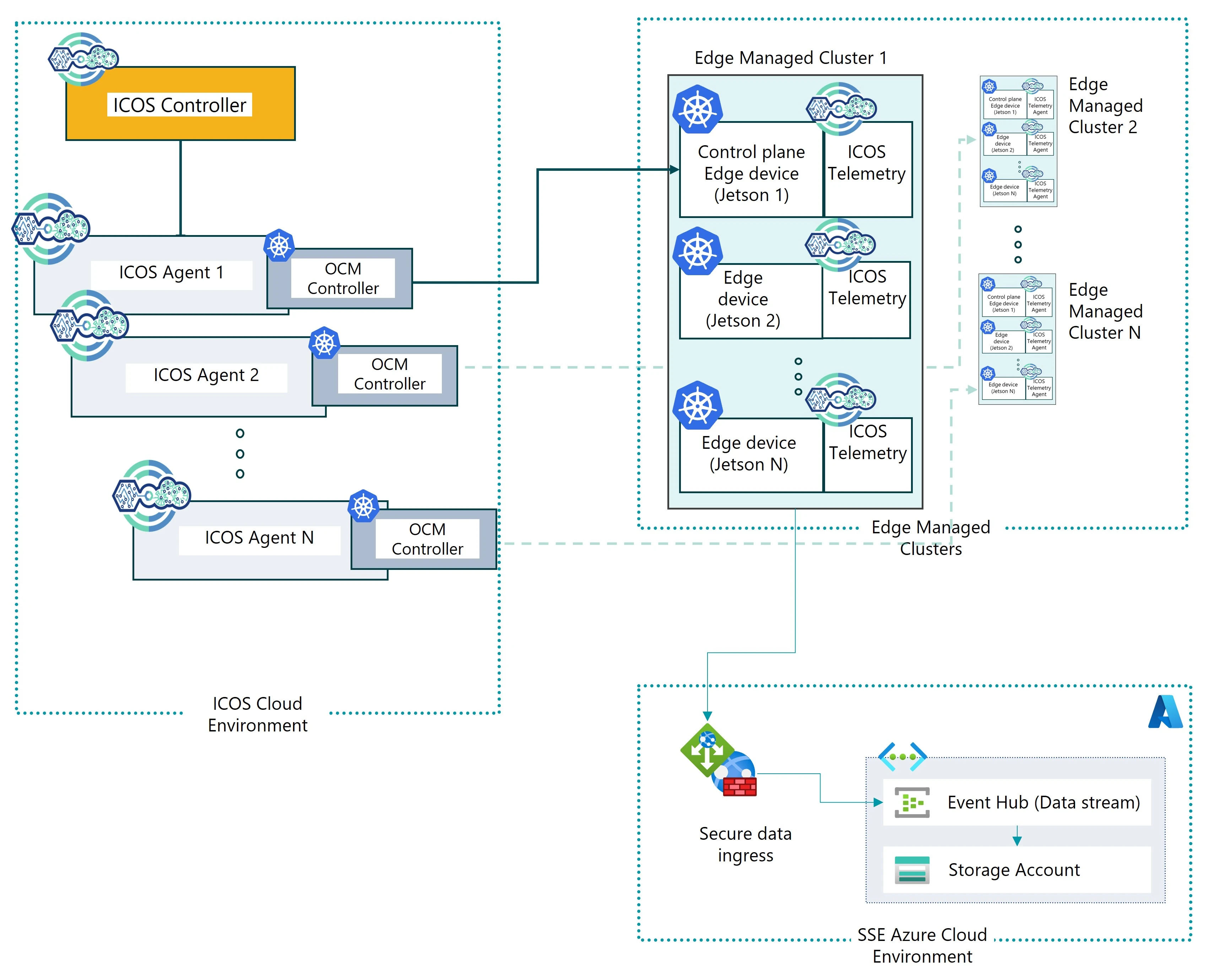Energy Management and Decision Support system
Use Case focuses on optimising domestic energy use with Electric Vehicles, Heat Pumps, PV systems, and storage playing key roles in achieving net-zero emissions. The ICOS device's algorithm optimises energy management by predicting future demand, forecasting solar PV output, assessing EV charging needs, and anticipating future retail cost signals.
It navigates the complex decisions of using, storing, or selling energy amidst fluctuating demand, supply, and costs. This enables customers to automate intricate cost optimisation decisions while retaining control over their preferred choices.
Challenges
Ensuring a high level of data protection and security at all stages involves implementing robust safeguards during data collection, analysis, storage, and processing. This protects sensitive information from unauthorized access and breaches, ensuring compliance with privacy laws and regulations.
Provisioning customized energy solutions for optimal energy usage and increasing renewable energy sources involves developing tailored strategies and systems to enhance energy efficiency. This includes designing and implementing solutions that maximize the use of energy while minimizing waste, and incorporating more renewable energy sources, such as solar or wind power, to reduce reliance on non-renewable energy and promote sustainability. These solutions are adapted to meet the specific needs and goals of users, ensuring efficient and eco-friendly energy management.
Ensuring viable and sustainable real-time solutions in all settings, including areas with poor connectivity, involves creating and implementing effective and enduring systems that function reliably and efficiently in real-time. This includes developing technologies and strategies that can operate smoothly even in regions with limited internet or network access, ensuring that these solutions are practical, sustainable, and accessible to all users regardless of their location. This approach guarantees that essential services and operations remain uninterrupted and effective, supporting continuous and reliable performance.
Benefits
- Reduced data transfers and latency
- Increased security
- Flexibility to tailor to each customer's specific needs, ultimately enhancing customer satisfaction and retention
Infrastructure and devices
The UC4 implementation consists of three constituent parts, namely,
- Sensors and associated IoT metering hardware installation,
- Edge processing and associated Edge component hardware, and finally
- Cloud environment and associated ICOS infrastructure.
Sensors and associated IoT metering hardware installation: This includes the installation of Inductive Power Monitoring Clamps in the fuse board of the given test house. The Inductive Power Monitoring clamps are connected with IoT energy metering hardware (ESP32 based) to record timestamped consumption data at 60 second intervals. Importantly, the hardware is connected to an MQTT broker co located within the same local network (hosted by the Edge component of UC4). This provides for transmitting the recorded data in real time via MQTT protocols.
Edge processing and associated Edge component hardware: The Edge component of UC4 is composed of a Kubernetes cluster of Nvidia Jetson Orin Nano devices, where one of the Jetson acts as the master node. These devices were selected for their high specification and capability (CPU/GPU, 8GB shared memory, CUDA cores, Wi-Fi and fast network connectivity). The setup of the master node includes deployment of containerized applications leveraging Docker based virtualization. These applications are open-source and designed specifically for home automation with a focus on privacy and location control.
Cloud environment and associated ICOS infrastructure: A dedicated Cloud environment has been set up for UC4. Currently this is a Microsoft Azure environment within SSE’s Azure tenant. The environment leverages Blob Storage and Data streaming resources. The full data streaming process of the UC4 utilises Azure Event Hub to achieve communication between the IoT, the Edge and the Cloud environment. Within this Cloud environment data is persisted to Blob Storage in parquet format. Additionally, during the Alpha phase of ICOS, UC4 has been leveraging the Test Bed Cloud facilities provided by the ICOS project to ensure seamless integration with the ICOS components.
Architecture
The UC4 architecture is composed of an Edge Managed Cluster of two nodes and a Cloud component hosted in Athens. The creation of the Edge cluster provides several advantages such as high availability of services, high performances, scalability, and load balancing. k3s was selected for the final UC4 Edge cluster deployment due to being a lightweight, cost-effective Kubernetes distribution.
The cluster is composed of a master and a slave node with the possibilities to augment the number of workers if required by the application workload. The cluster nodes are connected through the local (private) network of the households. Due to the presence of the Kubernetes Cluster, UC4 selected OCM as resourcing and clustering manager. The Edge devices of UC4 are networked with an ICOS test bed located in Athens. This is achieved by connecting the cluster’s master node to the test bed via a secured VPN channel backed by the OpenVPN protocol.

Figure 1: use case system architecture
 Dublin, Ireland
Dublin, Ireland

This project has received funding from the European Union’s HORIZON research and innovation programme under grant agreement No 101070177.


